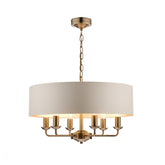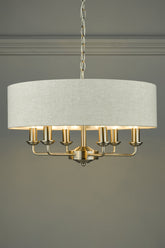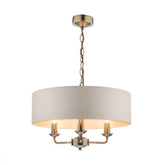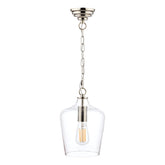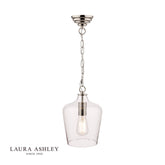How to Light Your Bedroom for Maximum Comfort and Impact
These days, bedrooms aren’t just places where people go to sleep. Some are also mini sitting rooms or playrooms for children and some have even had a home office space added in. Nevertheless, a bedroom is still the place where you need it sometimes to be completely dark or completely light (and sometimes somewhere in between).
That’s why it is so important to get the lighting in your bedroom just right to ensure it is a comfortable place to rest at night but bright enough to allow you to get ready for your busy day.
Our expert Judy Davison has put together these hints and tips to help you create the perfect bedroom lighting scenarios according to your needs, whilst still bearing in mind that this is where you need to get a good night’s sleep.
Layered Bedroom Lighting
Knowing how to layer is the key to creating the best lighting your bedroom by finding the right balance between ambient, task, and accent lighting. By creating this balance, you will be able to create the lighting for any mood and any activity with the flick of a switch.
You should begin your light layering through the use of ambient or general lighting. Ambient light includes natural lighting through large windows or skylights or relevant artificial lighting. What you’re looking for is a decent amount of lighting that will enable you to perform general tasks like making the bed or putting clothes away.
In terms of artificial lighting, ambient light is best achieved with ceiling fixtures (like flush mount ceiling lights, chandeliers, or pendant lights for example) or through portable lights such as floor lamps. Both types of lighting will offer a sufficient amount of lighting for activities that don’t require bright, focused light.
For activities which need more focus, like reading, working or applying makeup, then you need to introduce task lighting to the mix. Task lighting doesn’t just mean an occasional table lamp; other options include low hanging pendants on either side of the bed, sconces, wall mounted lights on either side of a headboard or other directional lighting placed above a dressing table for example. For task lighting you will also need stronger light bulbs than you would for other lights in your bedroom.
Finally, you can also introduce accent lighting to your bedroom. These lights are used to highlight features such as a painting on the wall or other feature in the room and call also be used in alcoves and recesses to create a pleasant and cosy atmosphere.
To Dim or Not to Dim?
Dimmers are popular in a bedroom environment as, if there’s only one bright light source in the room, it’s tricky to achieve the softer light you may need to relax before switching off completely. Of course bedside lamps are also ideal for those who like to relax and read before going off to sleep.
When layering your bedroom lighting, dimmers can also play an important role by adding an extra dimension to the room’s environment enabling you to change your lighting to suit your needs. At maximum brightness, a dimmer lends itself to providing general lighting, while at lower settings, the feature allows you to create a cosier, more relaxing light – plus they are easy to install.
Best Bulbs for Your Bedroom
As you layer your bedroom lighting, it’s also important to consider the type of bulb you’ll need to use for each fixture. Depending on the bulb’s lighting intensity and the colour it emits, can affect the overall atmosphere in a room due to the lighting.
We used to use wattage as an indication of how bright our light bulb would shine. Wattage is technically a measure of how much energy/power a bulb draws rather than brightness.
Modern light bulbs use less energy, and so using watts for brightness becomes less useful. For example, a modern LED bulb comparable in brightness to a traditional 60W bulb is only 8-12 watts. Today, the lumen (lm) is the correct measurement of brightness emitted by a light bulb; the higher the lumens, the brighter your LED bulb will shine.
Your bedroom is the one room that is a sanctuary in your home and as such you want a calming and soothing quality of light. Ideally you should choose ones that have a warm colour temperature and low lumens to create the soft amber light a bedroom deserves.
The Light Company
We hope you find these tips useful. We have loads more helpful hints and tips on the news section of our website here and you can also browse for our products by brand, name or room. We stock a huge range of leading brands including David Hunt, Laura Ashley and där lighting… to name but a few.
